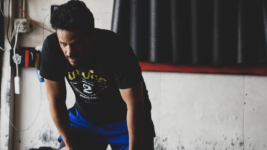
This is the first of a four part series looking into basic locomotion. Running is the most ubiquitous form of exercise in the United States. Ironically, part of the attraction of running is its accessibility and its perceived safety. Meanwhile, almost no one does it well and it injures more participants than any other training modality. More runners will be injured each year than runners that won’t be injured.
Research shows that runners will be injured up to 12.1 times per 1000 hours of training, which is fully double that of the incident of injury in the strength sport, strongman, which is perceived as particularly dangerous (yet, has only up to 6.1 injuries per 1000 hours of training). For such a seemingly “natural” movement, why is running so troubling for humans?
It’s a skill problem.
Running, like all movement, is a skill. This distinction is the critical component in not just improving performance but resolving these unacceptable injury issues. The perfect storm for this disaster in running is hubris in our running abilities combined with our ignorance about how dangerous it is. In fact, many Americans will choose to go for a run rather than lift weights based on perceived safety alone.
Why do the injuries in running get looked over while the injuries in other sports do not? The feedback loop is poor. Making an error in the weightroom comes with immediacy in the form of a missed lift and/or discomfort. While running, we often get from Point A to Point B without any notable negative feedback. Meanwhile, the running form all the while is atrocious. This lends to the quantitative orientation that is so prevalent in the running community. Milage is king. While there’s plenty of quantitative focus in the gym (because getting stronger and moving more weight is valued) there is more respect for qualitative elements (i.e. form and safety). Since most runners don’t have a standard for quality running, they will run with chronically poor form until feedback comes in delayed form via a knee or hip surgery.
The next three installments of this series will outline a standard for running from my friend, Dr. Romanov, the Russian sport scientist behind the first ever standard for human locomotion. You’ll learn how we can practice locomotion in a way that is congruent with nature. The result will be better, faster, pain free running.
Stay tuned.
Logan Gelbrich
@functionalcoach
3/25/20 WOD
Handstand Series:
Complete 2 rounds for quality of:
6 Donkey Kick-Up Left Leg
6 Donkey Kick-Up Right Leg
Then, complete 2 rounds for quality of:
6 Bent Knee Kick-Up to Wall Left Leg
6 Bent Knee Kick-Up to Wall Right Leg
Then, on whichever leg felt strongest,
Accumulate 10 reps
Lunge to Kick-up (with or without wall support)
AMRAP 20
Walking Lunges

